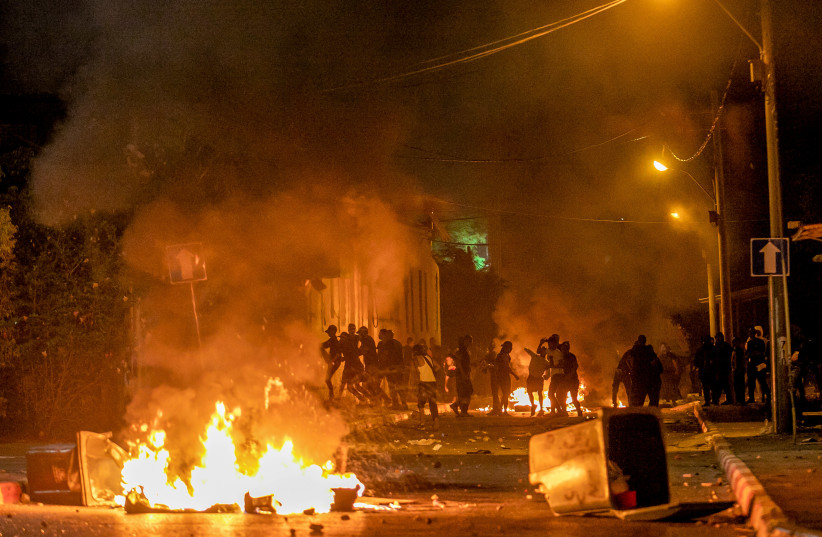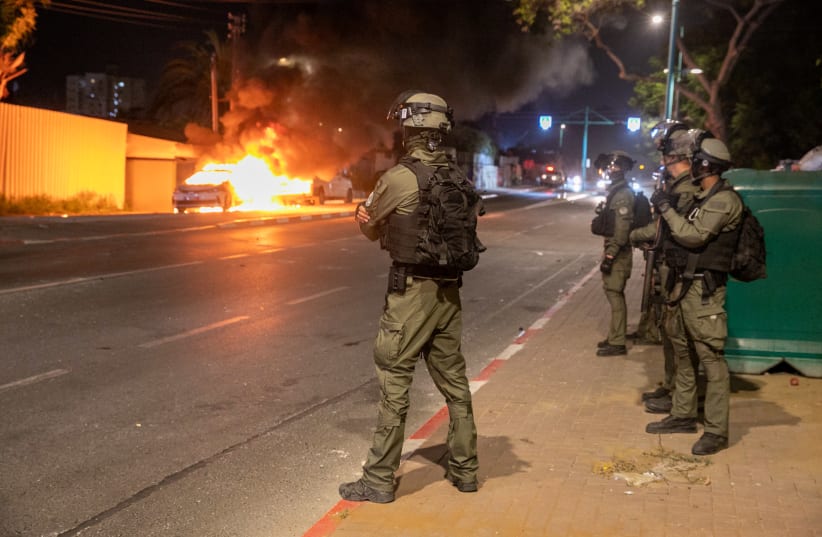The riots that erupted simultaneously in a number of Arab neighborhoods in Jerusalem on Wednesday night came as a surprise to no one.
Scenes of young men hurling stones and Molotov cocktails or unleashing fireworks at policemen have long ceased to be startling, especially in flashpoint neighborhoods such as Silwan, Isawiya, Shuafat refugee camp and A-Tur.
In fact, hardly a day passes without clashes taking place between small groups of young men and police officers in these areas.
What happened on Wednesday night, however, was different.
What happened Wednesday night?


This time, the violence spread to neighborhoods that are considered relatively quiet and safe, including Beit Hanina, Wadi Joz and Ras el-Amud.
In each neighborhood, small groups of masked men barricaded themselves behind burning tires and garbage containers and attacked police officers as soon as they showed up.
This was far from a popular uprising. Rather, it was a well-orchestrated outburst of violence in solidarity with the residents of Shuafat refugee camp and its adjacent suburbs of Ras Khamis, Dahiet al-Salam and Anata.
The unrest came at the end of a general strike that was observed in east Jerusalem (and the West Bank) to protest the severe restrictions imposed on the area of the camp in the aftermath of the shooting attack in which Sgt. Noa Lazar was killed. In the attack, which took place at a checkpoint at the entrance to the refugee camp, a civilian security guard was seriously wounded.
Immediately after the attack, the security forces sealed off the camp area, where 130,000 Palestinians are said to live. Residents who wanted to leave the area had to wait in line for hours and undergo a thorough security check.
The whole area, located between Jerusalem’s northern French Hill and Pisgat Ze’ev neighborhoods, was cut off from the city through a checkpoint and a security barrier nearly two decades ago, although the vast majority of the residents living there hold Israeli-issued ID cards.
The restrictions and the massive manhunt conducted by the security forces in search of the perpetrator of the shooting attack forced many residents to remain indoors.
On Tuesday, activists living in the area held an emergency meeting, after which they called for a general strike in protest of the strict security measures. A similar call was made by the Lions’ Den armed group in Nablus.
As a result of the strike, schools and businesses were closed in east Jerusalem, leaving young men at home with time on their hands. Some of them took to the streets after sunset to participate in the protests against the “collective punishment” of the residents living in the camp and its surroundings.
At the same time, hundreds of residents demonstrated near the Shuafat refugee camp checkpoint, demanding an end to the restrictions. The demonstration was one of the largest in the area in years.
Now that the checkpoint at the entrance to the refugee camp has been fully reopened for the first time since the attack last Saturday, the protests in solidarity with the “besieged” residents are unlikely to continue.This, however, does not mean that calm will return to the neighborhoods of east Jerusalem.
The easing of the restrictions has given the young men of east Jerusalem a sense of “victory.” They are convinced that the Israeli move came in response to the violence that hit several parts of east Jerusalem.
It is this sense of victory that will help calm the situation, at least in the short term.
On the other hand, Israel’s perceived capitulation (by fully reopening the checkpoint) has sent a message that violence pays.Wednesday night’s riots were held for a specific reason: to pressure Israel to lift the security restrictions imposed on nearly half of the Arab population of Jerusalem who are living in the refugee camp and its vicinity. Many residents on Thursday expressed satisfaction for having achieved that goal.
But the nightly clashes that take place in some neighborhoods will continue, notwithstanding the situation in the camp area.
These clashes, which occur almost every night in Silwan and Isawiya, are not necessarily tied to a specific event. The very presence of a police vehicle in these neighborhoods is sufficient to send the young men out into the streets.
